Gardeners and flower enthusiasts around the world are always on the lookout for unique and vibrant additions to their landscapes.
Red sunflowers, with their stunning crimson hues, are a captivating twist on the traditional golden-yellow sunflowers we’re all familiar with.
In this blog post, we will delve into the fascinating world of red sunflowers, exploring how to grow them from seed, their numerous benefits, and essential care tips to ensure they thrive in your garden.
What Is Red Sunflower – Are They Real & Natural?
Red sunflower is real, and yes, they exist!
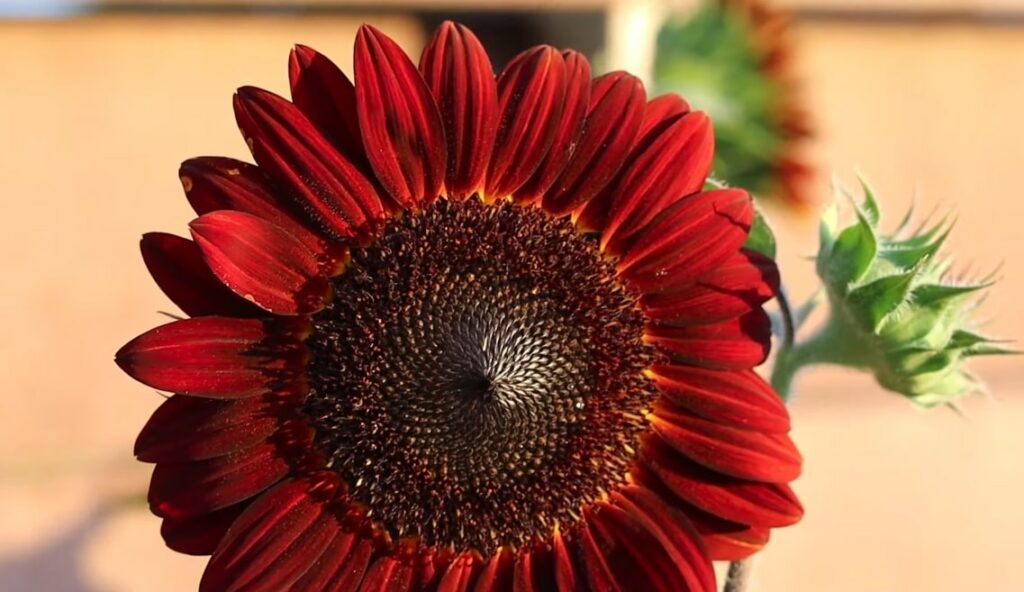
Red sunflowers are a unique and captivating variety of sunflowers (Tithonia Rotundifolia) with stunning crimson hues that set them apart from the traditional yellow and golden varieties we are familiar with.
Red sunflowers are not the result of digital manipulation or artistic imagination; they are the product of careful breeding and hybridization. Through selective breeding techniques and advancements in horticulture, plant breeders have successfully developed sunflowers with various shades of red, ranging from deep burgundy to vibrant scarlet.
These hybrid sunflowers showcase the natural beauty and diversity that can be achieved through careful cultivation and genetic selection
Red sunflowers have gained popularity among gardeners, floral enthusiasts, and cut-flower growers due to their striking aesthetic appeal and ability to add a touch of drama and uniqueness to landscapes and floral arrangements.
Sun Flower: A Quick Glance
| Property | Description |
|---|---|
| Scientific Name | Tithonia Rotundifolia |
| Common Names | Mexican Sunflower, Red Sunflower, Torch |
| Family | Asteraceae |
| Native to | Mexico and Central America |
| Plant Type | Herbaceous Perennial |
| Height | 5 to 8 feet (1.5 to 2.4 meters) |
| Flower Color | Bright orange-red petals |
| Flower Shape | Large, daisy-like flowers |
| Bloom Time | Summer to Fall |
| Sunlight | Full sun |
| Soil | Well-draining, fertile soil |
| Watering | Moderate; drought-tolerant once established |
| Attracts Pollinators | Butterflies, Bees, Hummingbirds |
| Deer Resistant | Yes |
| Low Maintenance | Yes |
| Uses | – Ornamental plant in gardens and landscapes – Pollinator-friendly plant for wildlife gardens – Cut flower for floral arrangements |
| Propagation | Seeds, Stem Cuttings |
| Invasive Potential | Low (non-invasive in most regions) |
| Environmental Benefits | – Provides nectar for pollinators – Habitat for wildlife – Soil erosion control |
| Cautions | – Can spread rapidly in favorable conditions – May self-seed prolifically |
How to Grow Red Sunflowers From Seeds
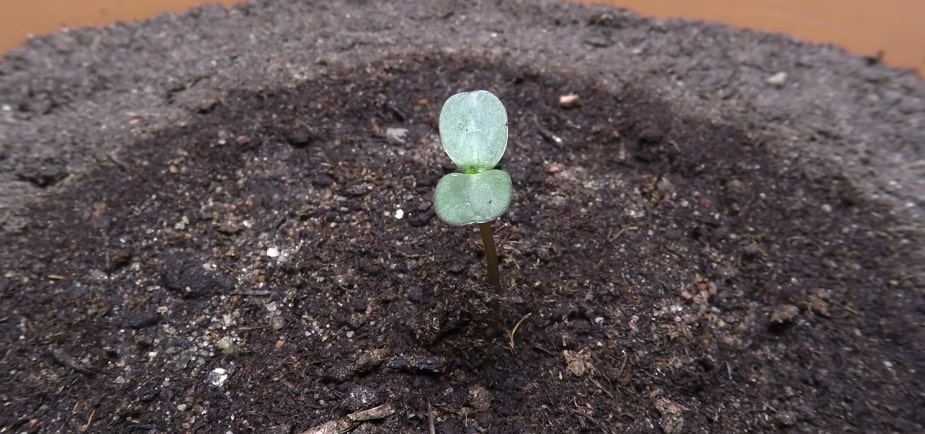
Growing red sunflowers from seeds can be a rewarding and enjoyable experience. Follow these steps to successfully grow these stunning flowers in your garden:
- Seed Selection:
Obtain high-quality red sunflower seeds from reputable seed suppliers or nurseries. Look for varieties specifically labeled as “red sunflowers” or “red-flowered sunflowers” to ensure you get the desired color. - Timing:
Red sunflowers are typically grown as annuals, and they prefer warm temperatures. Plan to sow the seeds after the last frost date in your region when the soil has warmed up. - Site Selection:
Choose a sunny spot in your garden with full sun exposure throughout the day. Red sunflowers thrive in direct sunlight, so avoid shaded areas. - Soil Preparation:
Prepare the soil by loosening it to a depth of about 6-8 inches. Remove any weeds or debris and incorporate organic matter, such as compost, to improve soil fertility and drainage. - Sowing the Seeds:
Create small holes in the soil, about 1 inch deep. Plant the red sunflower seeds in these holes, spacing them about 6-12 inches apart. For a more appealing visual impact, consider planting them in groups or rows. - Watering and Germination:
After planting the seeds, water the soil gently but thoroughly. Keep the soil consistently moist until the seeds germinate, which usually takes 7-14 days. Avoid overwatering, as it can lead to rotting of the seeds. - Thinning Seedlings:
Once the seedlings emerge, thin them out if necessary to maintain proper spacing. This will help ensure adequate airflow and room for each sunflower to grow. - Care and Maintenance:
- Watering: While red sunflowers can tolerate some drought, it’s essential to keep the soil consistently moist, especially during hot and dry periods. Water deeply to encourage the roots to establish properly.
- Fertilization: Apply a balanced fertilizer once a month to provide essential nutrients for healthy growth.
- Mulching: Mulch around the base of the sunflowers to retain soil moisture, suppress weeds, and regulate soil temperature.
- Staking (if needed): Taller varieties of red sunflowers might require staking to support their height and prevent bending or breaking of stems in strong winds.
- Protection from Pests and Diseases:
Inspect your sunflowers regularly for signs of pests or diseases. Common pests include aphids and caterpillars, while fungal diseases like powdery mildew can be an issue in humid conditions. Use natural or organic remedies to manage these problems, avoiding harmful chemicals that can harm beneficial insects. - Harvesting Seeds (optional):
If you want to save seeds for the following year, allow some sunflowers to fully mature on the plant. Once the flower heads dry out, collect the seeds by removing them from the dried flower head.
By following these steps and providing proper care, you can enjoy the vibrant beauty of red sunflowers in your garden and create a stunning focal point that will attract pollinators and bring joy throughout the growing season.
How To Care For Red Sunflowers?
Below are some tips to take good care of your Red sunflower plant.
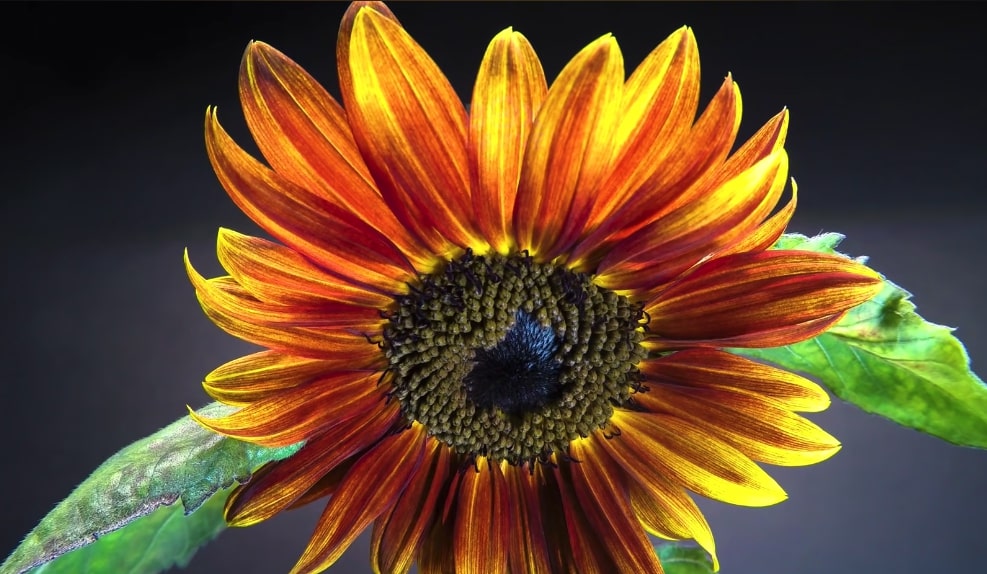
1. Sunlight: Red sunflowers are sun-loving plants, and providing them with ample sunlight is crucial for their healthy growth and vibrant blooms. Choose a sunny spot in your garden where they can bask in full sunlight for at least 6-8 hours each day.
Sunlight is essential for photosynthesis, which fuels the plant’s growth and flower production. Without sufficient sunlight, red sunflowers may become weak and leggy, compromising their overall appearance.
2. Watering: Maintaining the right level of moisture is essential for red sunflowers, as they prefer well-draining soil that remains consistently moist. Regularly water the plants, ensuring that the water reaches the root zone.
During hot and dry periods, pay extra attention to watering to prevent the soil from drying out completely. However, be cautious not to overwater, as excessively wet soil can lead to root rot and other problems.
3. Mulching: Mulching around the base of the red sunflowers offers multiple benefits. Organic mulch, such as shredded leaves or straw, helps retain soil moisture, reducing the frequency of watering.
It also suppresses weeds, which can compete with the sunflowers for nutrients and water. Additionally, mulch regulates soil temperature, keeping the roots cool in hot weather and insulating them during cooler periods.
4. Fertilization: To support robust growth and abundant flowering, red sunflowers will benefit from periodic fertilization. Use a balanced, all-purpose fertilizer or a specialized flowering plant fertilizer.
Follow the recommended application rates and frequency indicated on the fertilizer packaging. Avoid over-fertilizing, as excessive nutrients can lead to lush foliage but fewer blooms.
5. Deadheading: Encourage prolonged flowering by regularly deadheading the red sunflowers. Deadheading involves removing spent flowers by cutting them off near the stem.
This practice redirects the plant’s energy toward producing new blooms instead of setting seeds. As a result, your red sunflowers will continue to produce vibrant flowers throughout the growing season.
6. Support (if needed): Taller varieties of red sunflowers may require staking or support to prevent their stems from bending or breaking in strong winds or heavy rain.
Bamboo stakes or other suitable supports can be used. Gently tie the stems to the support to provide stability without constricting the plant’s growth.
7. Pest and Disease Management: Keep a watchful eye on your red sunflowers for signs of pests or diseases. Common pests that may affect sunflowers include aphids, caterpillars, and grasshoppers.
Additionally, fungal diseases like powdery mildew can be problematic in humid conditions. Consider using natural or organic remedies to manage these issues, as chemical pesticides can harm beneficial insects and pollinators.
8. Pruning (optional): Though not strictly necessary, pruning can be done to encourage bushier and more compact growth in red sunflowers. This is best done earlier in the growing season, and you can trim back tall and leggy stems to promote a fuller and healthier plant.
9. Overwintering (if applicable): In regions with colder climates, red sunflowers are typically grown as annuals and will not survive the winter.
However, if you wish to attempt overwintering, collect seeds from mature flower heads and store them in a cool, dry place. Plant these seeds the following spring to enjoy another season of vibrant red sunflowers.
How Often To Water Red Sunflower?
Water red sunflowers regularly, keeping the soil consistently moist but not waterlogged.
As young seedlings, water them every 2-3 days or as needed, ensuring they establish a strong root system. Once they’re established, water deeply once a week, adjusting as necessary based on weather conditions.
During hot and dry periods, water every 4-5 days to prevent dehydration. Consider natural rainfall when determining watering frequency.
Avoid overwatering and water directly at the base of the plant to prevent fungal issues.
Monitor the soil moisture regularly and adjust the watering schedule accordingly for healthy and vibrant red sunflowers throughout the season.
Red Sunflower Benefits
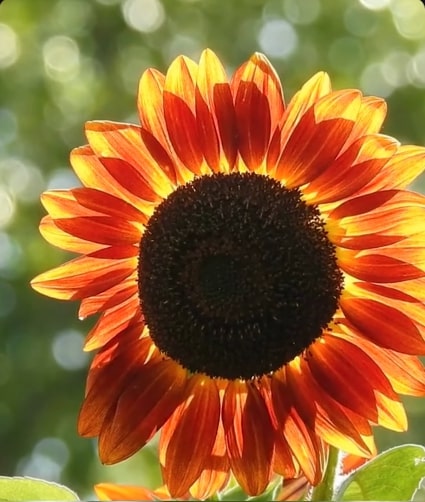
Red sunflowers offer several benefits, making them a valuable addition to gardens and landscapes. Here are some of the benefits of growing red sunflowers:
Aesthetic Appeal
The most obvious benefit of red sunflowers is their striking visual appeal. Their rich crimson hues add a captivating and unique element to any garden or floral display.
Red sunflowers stand out from the traditional yellow and golden sunflowers, making them eye-catching focal points and conversation starters in outdoor spaces.
Pollinator Attraction
Red sunflowers, like their yellow counterparts, act as magnets for various pollinators. Bees, butterflies, and hummingbirds are attracted to the nectar-rich flowers, making them essential food sources for these beneficial creatures.
By planting red sunflowers, you can support local pollinator populations, contributing to overall ecosystem health and biodiversity.
Emotional Impact
The color red is often associated with passion, love, and energy. Having red sunflowers in your garden can evoke positive emotions and create an inviting and uplifting atmosphere.
Their vibrant blooms can brighten up dull spaces, promoting feelings of happiness and excitement.
Cut Flowers
Red sunflowers make excellent cut flowers for floral arrangements. Their bold color and large flower heads add drama and vibrancy to bouquets.
Whether used alone or combined with other flowers, red sunflowers can create stunning and eye-catching arrangements for special occasions or simply to adorn your home.
Wildlife Habitat
Besides attracting pollinators, red sunflowers can serve as a habitat for other wildlife, such as birds seeking seeds or shelter.
They contribute to the overall ecological balance by providing food and shelter for a variety of creatures, enhancing the biodiversity of your garden.
Low Maintenance:
Red sunflowers are relatively easy to grow and require minimal maintenance once established. As long as they receive adequate sunlight, water, and well-draining soil, they can thrive with little intervention, making them a suitable choice for both experienced gardeners and beginners.
Red Sunflowers: Key Takeaways
Red sunflowers are a captivating and enchanting addition to any garden or landscape.
With their stunning crimson hues, they stand out as a vibrant twist on the traditional yellow sunflowers we know and love.
Beyond their aesthetic appeal, red sunflowers offer numerous benefits, from attracting pollinators and supporting wildlife to adding a touch of passion and energy to the surroundings.
Their low maintenance nature and ease of cultivation make them an excellent choice for both seasoned gardeners and those new to gardening.
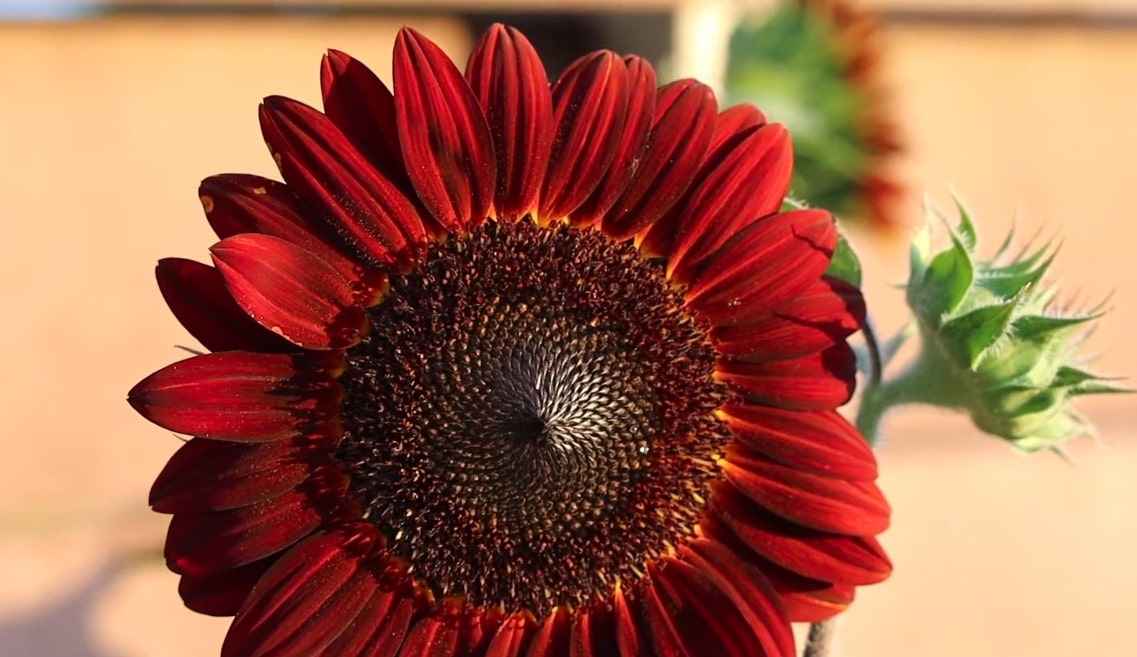
Leave a Reply